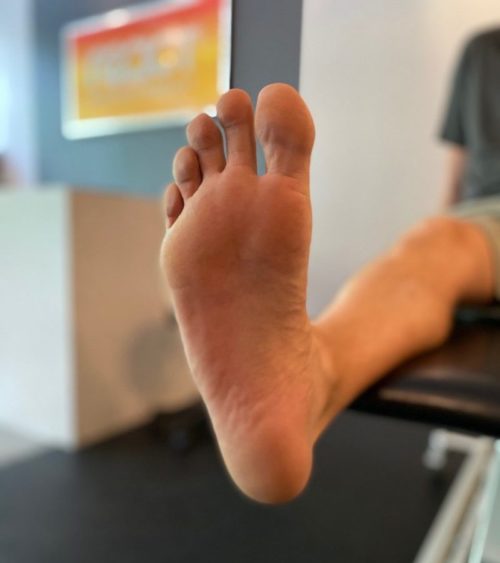Chronic Heel Pain: How To Fix It

Chronic heel pain can be debilitating for many adults. A majority of the time, heel pain is due to a condition called plantar fasciopathy that is the result of degeneration of the connective tissue under the arch of your foot. The connective tissue called your plantar fascia extends across your arch and connects to your heel which is usually the most common site of pain and dysfunction. The pain may be worse with prolonged standing or walking and is often the most painful when you first get out of the bed in the morning.
TISSUE DEGENERATION
Your plantar fascia is composed of a dense network of highly organized collagen fibers, which gives the tissue the strength necessary to support the extraordinary amount of force placed through the arch when walking and is why it is called your arch support. When too much loading or force occurs to your arch and exceeds the strength of the fascia, micro-tearing may occur. These small tears within the plantar fascia weaken the structural integrity of the tissue and create this vicious cycle of further tearing and pain. Think of the fascia looking like a frayed rope as a result.
SO HOW DO I FIX IT?
Since plantar fasciopathy often results from excessive tension on the plantar fascia, treatment should involve reversing the factors that lead to this excessive strain. However, the reason for the excessive strain is dependent on each individual’s unique biomechanical compensations. For example, individuals with higher-arched feet lack the mobility needed to assist in absorbing ground reaction forces when their foot strikes the ground. This results in an inability to dissipate the forces once they place their foot on the ground placing this excessive load on the plantar fascia.
On the other hand, individuals with lower arches have problems with force distribution from too much motion in the foot. Furthermore, if your gluteal muscles are weak, the ability of these muscles to assist with distributing the forces from the ground is reduced placing excessive stress and loading on the fascia.
Therefore, a cookie-cutter treatment approach by healthcare professionals is often ineffective. These treatment methods are often futile because effective treatment for this condition depends on how each individual compensates when they move.
If you have been dealing with chronic heel pain that has not been unresponsive to other methods in the past, React Physical Therapy can help. Each patient is thoroughly assessed to determine how each specific faulty biomechanical movement is contributing to your pain. This allows you to address the cause of your pain instead of just providing symptom relief.